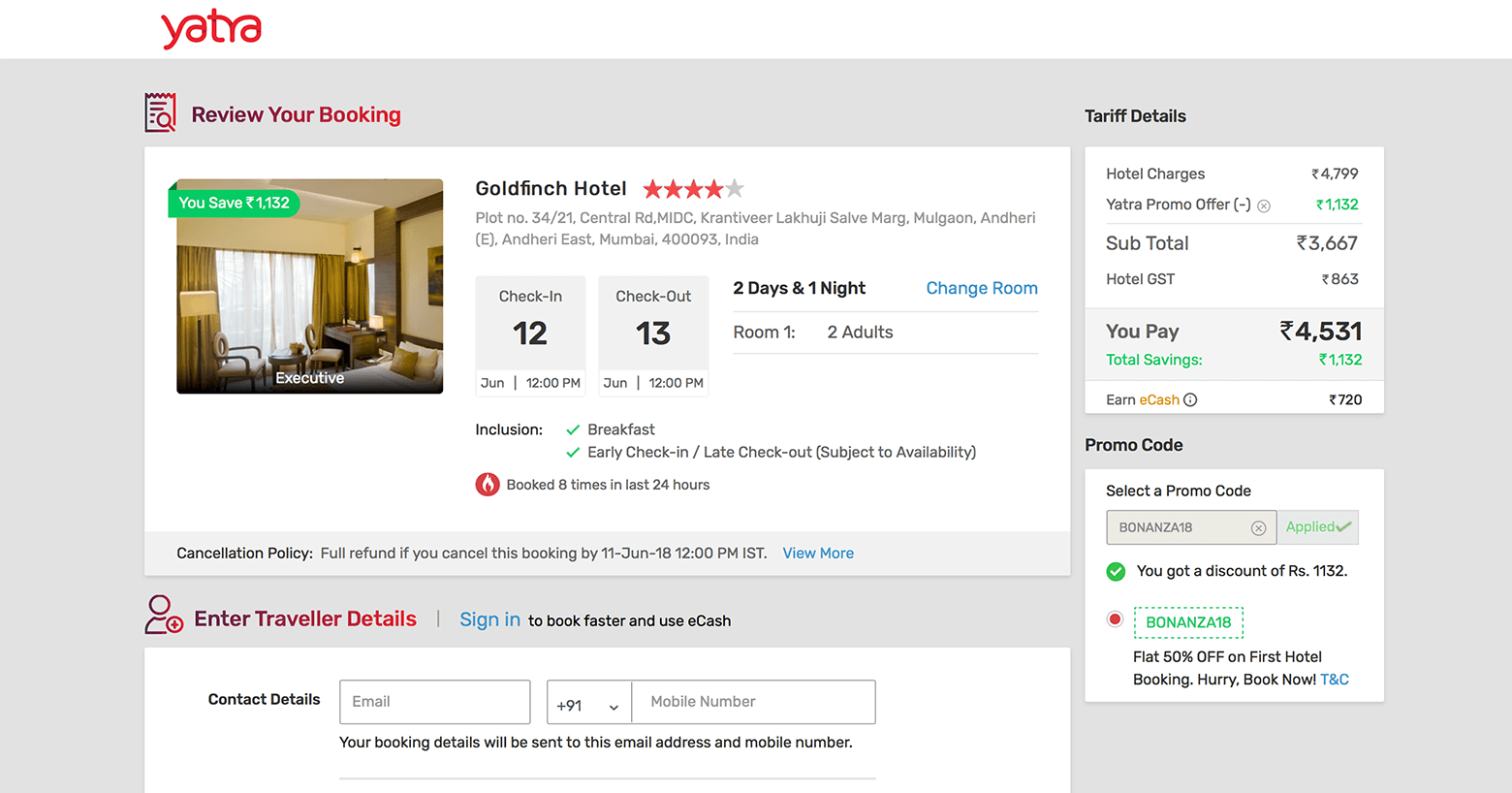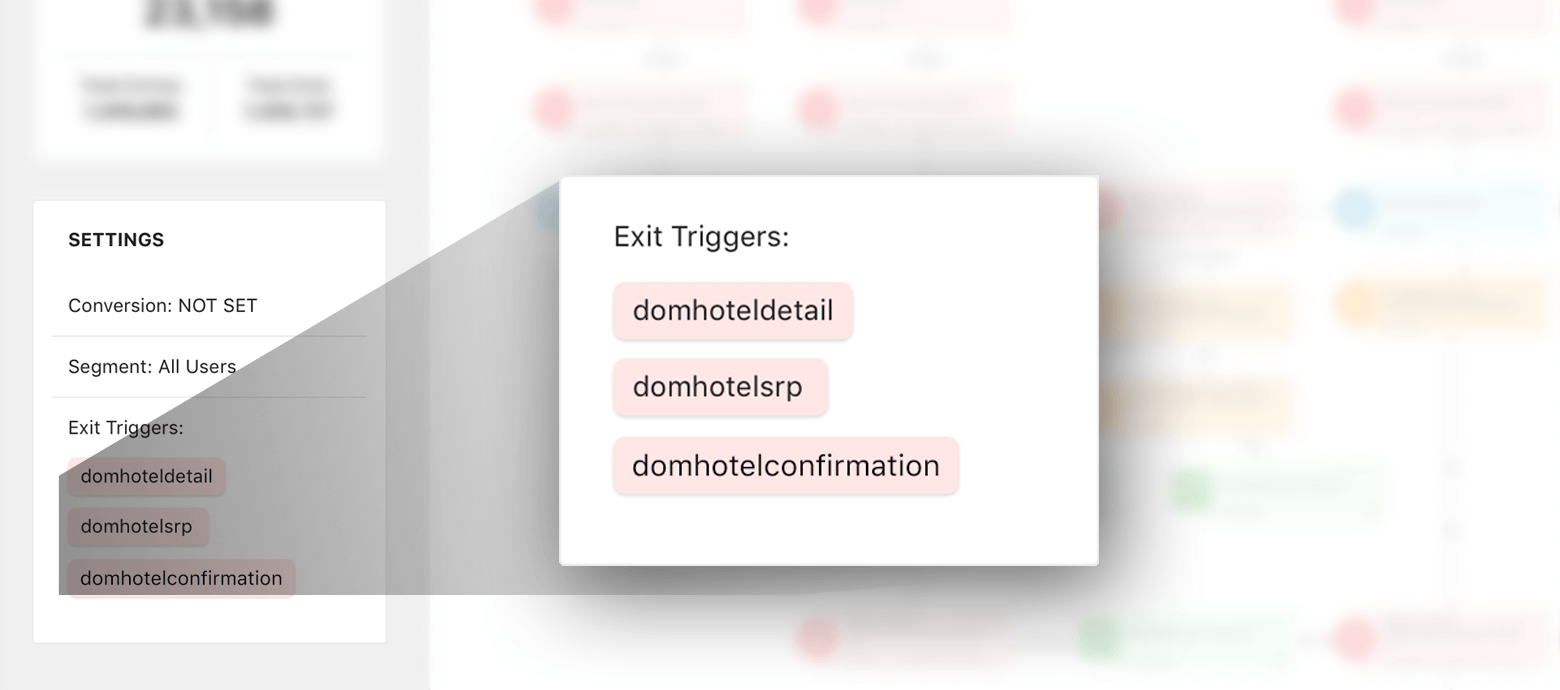Customer Profile
Yatra.com is a NASDAQ listed company (YTRA) headquartered in India. It is India’s second-largest OTA founded in 2006 by Dhruv Shringi, Manish Amin, and Sabina Chopra. The company has tie-ups with 70K hotels in India and nearly 800K hotels across the globe.
The Objective
Hotels form the larger part of an OTA business in comparison to airline bookings and OTAs are constantly striving to increase that size.
However, the hotel booking business also suffers from the abandonment problem. It is common for users to show intent for booking a hotel but not complete the transaction. This report from 2016 by Skift pointed out that OTA visitors “abandon $1.78 trillion in abandoned shopping carts”.
So minimizing abandonment was a big opportunity for Yatra to boost their bottom line and they chose WebEngage to accomplish that.
Mrinal Singhal who leads Customer lifecycle management at Yatra worked with WebEngage to address this problem. It’s obvious that not all users who search for a hotel on Yatra, intend to purchase. But our hypothesis is that the one who does have a slight inclination to purchase but yet abandon due to some avoidable reason can be convinced with a contextual engagement. And the figure tells that the number of such users is massive.
The WebEngage Effect
Yatra built a customer journey workflow that was aimed to nudge the users who have reached the ‘review page’, i.e. just one stop away from completing the transaction.

Reaching the review page was taken as a strong intent for purchase and these users were then contextually engaged to convert them into a customer.
Here is the snapshot of the journey:

There are other benefits that we discuss in results but let’s just remember for now that this journey helped Yatra improve gross bookings by 3.2%.
Below, we are discussing the key highlights of the journey. It would show light on the approach that Yatra took in addressing their abandonment problem.
- The journey nudged users to transact after every 48 hours as long as he didn’t purchase. We limited the maximum number of communication to 4 to ensure that we don’t nudge the user to the point of annoying him.
- If the user has already purchased, any sort of subsequent communication pertaining to it is a SPAM. And we know what James Bond said, “Never SPAM Never again”. So to ensure that after every message this journey verified whether the user has purchased or not and if he has the journey is stopped for him.
- The journey nudged users via web push which as I said is the most non-obtrusive communication medium. With the rising sensitivity among users (think GDPR) towards promotions, it is important that you reserve email for mission-critical communications.
- Suppose the user finalizes a hotel, confirms the number of rooms, and reaches the review page too. But at the end moment changes his mind and closes that page to look for other hotels. We shouldn’t be running any communication for such users, right?. (remember what James bond said) To ensure that this journey has exit triggers.
As soon as the user does an action listed in the exit triggers, he is exited from the journey and thereby not sent any messaging.

- Every block contains the number of users who are in that stage giving Yatra a cursory view of the journey performance.

The Result
- Gross bookings increased by 3.2%
- Automated personalized retargeting
- Seamless mobile engagement with non-app users
The journey by virtue of personalized retargeting increased the gross bookings by 3.2%.
Well, that’s the quantifiable result of this journey.
Beyond that, the journey ensured personalized communication. According to Amadeus, 86% of travelers value personalized offerings. So, Yatra is clearly building strong leverage in the hypercompetitive OTA market.
Another significant achievement was the seamless engagement via web push notifications. Amidst the high uninstall rate of mobile apps, brands lose a critical link that keeps them connected to users at all times. Web push fills that void. It compensates for mobile push notifications, the access to which you lose when a user uninstalls the app. This journey displayed how to efficiently use web push as an engagement channel.








































